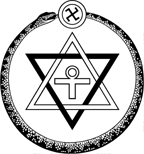History
The journal was first published by Blavatsky. The first issues were co-edited with Mabel Collins. From 1889 until Blavatsky's death in May 1891 Annie Besant was a co-editor. Besant then published the journal until September 1895, when George Robert Stowe Mead became a co-editor. The journal appeared twelve times a year and was 80 to 90 pages long. The last of twenty volumes was published in August 1897. More than 2800 articles were published in this journal between 1887 and 1897. Contributing authors included W. B. Yeats. Blavatsky’s "Luciferian" editorials provided inspiration to generations of adept esoteric writers that were to follow.
In September 1897 the journal was renamed to de:The Theosophical Review .
In 1979, the Theosophical Society in the Netherlands began publishing a Dutch Lucifer. In 2013, the English version of the magazine was resurrected. [7] [8]
This page is based on this
Wikipedia article Text is available under the
CC BY-SA 4.0 license; additional terms may apply.
Images, videos and audio are available under their respective licenses.

